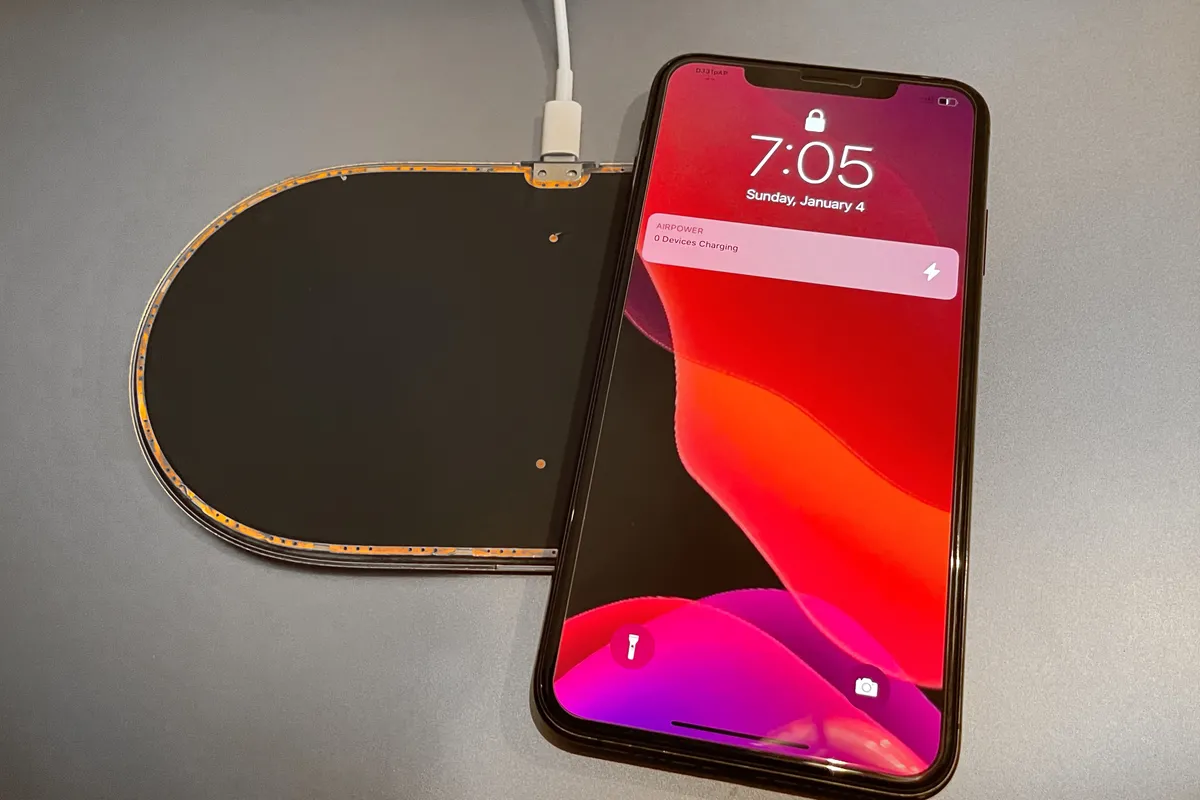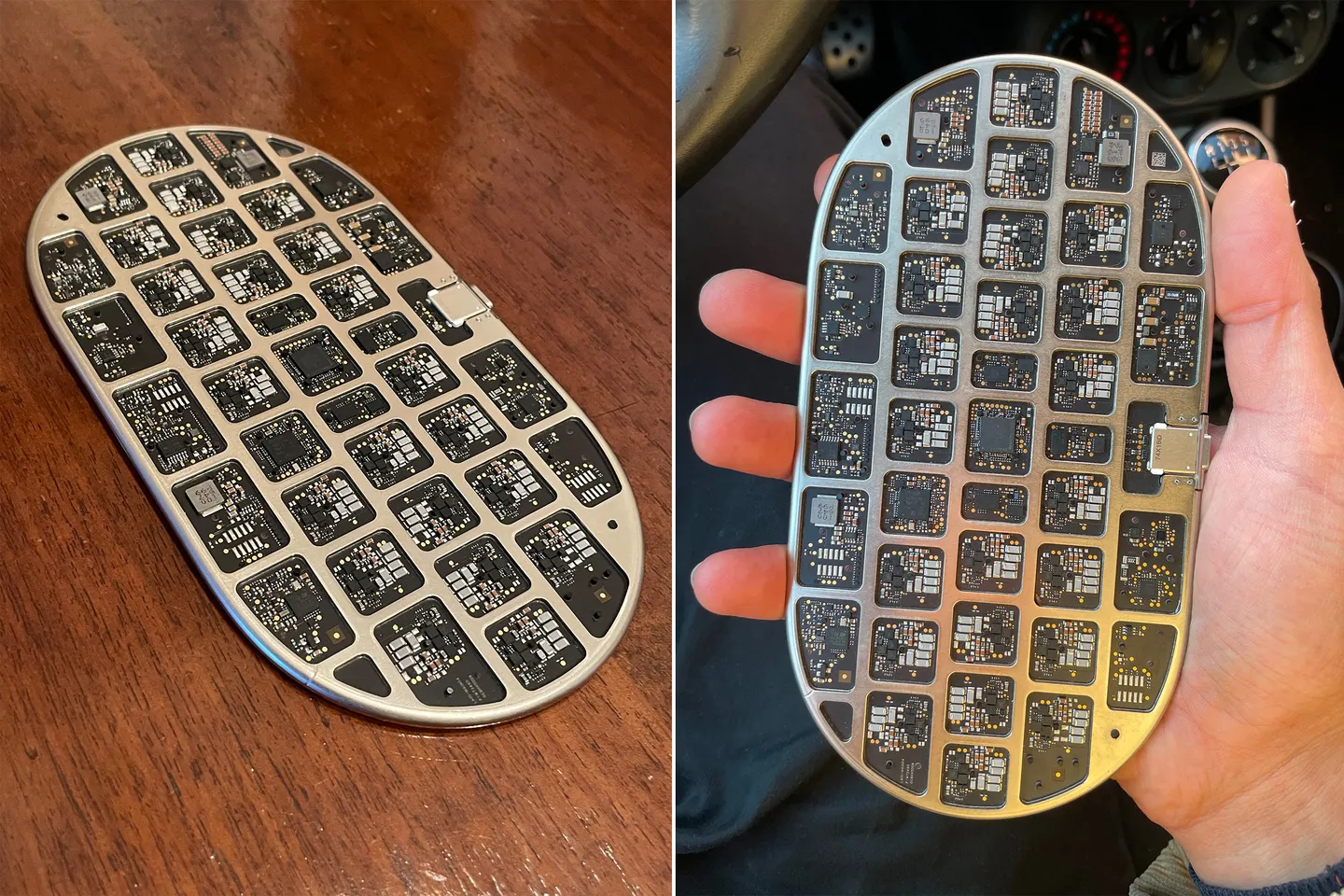What Happened to Apple AirPower? Why Was It Cancelled?
- Discover the hidden reasons Apple had to scrap its revolutionary AirPower charger.
- A rare prototype surfaces, offering a glimpse into what could have been.
- Overheating issues doomed AirPower despite its groundbreaking multi-device design.
The Promise and Demise of AirPower
In March 2019, Apple officially shelved its much-anticipated AirPower wireless charger, citing insurmountable technical challenges. Initially unveiled in September 2017, AirPower was envisioned as a revolutionary charging mat capable of simultaneously powering an iPhone, Apple Watch, and AirPods without the need for precise placement. However, persistent overheating issues ultimately led to its cancellation, leaving enthusiasts and competitors to speculate on what could have been. Photo via Reuters // The Apple AirPower had great promise, but it ultimately failed to ship.
Photo via Reuters // The Apple AirPower had great promise, but it ultimately failed to ship.
A Glimpse into the Prototype
Recently, a breakthrough emerged when Giulio Zompetti, a 28-year-old Italian prototype collector, acquired a working AirPower unit from Chinese e-waste sources. Speaking to The Verge, Zompetti revealed, “The unit lacks all of its exterior housing, and shows this beautiful and heavy stainless steel chassis.” Photos provided by Zompetti showcase the intricate design of the charger, featuring 22 coils on the front and 22 controller circuits on the rear.
However, the prototype requires pairing with specialized hardware to function. “It doesn’t work with production devices, because the coils are woken up by the device,” Zompetti explained. Despite these limitations, he successfully charged two prototype devices simultaneously, highlighting the unit’s potential despite its incomplete state. Photo via The Verge // A look inside a prototype of Apple's unreleased AirPower.
Photo via The Verge // A look inside a prototype of Apple's unreleased AirPower.
 Photo via The Verge // Apple's AirPower prototype is extremely complex inside, potentially hinting at why it was cancelled.
Photo via The Verge // Apple's AirPower prototype is extremely complex inside, potentially hinting at why it was cancelled.
Overheating Concerns: The Fatal Flaw
One of the primary reasons for AirPower’s cancellation was its inability to manage heat effectively. Apple leaker Kosutami shared images and videos demonstrating severe overheating, where the charger melted an AirPods Pro case, causing the plastic shell to blister. This issue was a critical blow to the project, as the excess heat posed significant safety risks.
Kosutami noted, “The version they tested got so hot that it started to melt their AirPods Pro case,” corroborating earlier reports about Apple’s struggles with the device’s thermal management. These overheating problems made it clear that Apple could not meet its high standards for product safety and reliability.
From AirPower to MagSafe: A Shift in Strategy
After abandoning AirPower, Apple pivoted to the MagSafe technology, introduced alongside the iPhone 12 in 2020. Unlike AirPower’s universal charging approach, MagSafe utilizes magnets to ensure precise alignment with compatible devices. Recent revelations by prototype collector Kosutami San have shown that the initial MagSafe prototypes from 2017 were markedly different from the final product, being thinner and featuring a different magnet arrangement.
“This isn't the MagSafe we know today,” San commented, highlighting the evolution from the original AirPower-integrated design to the more focused MagSafe charger. While MagSafe has been successful, it does not offer the multi-device charging capability that AirPower promised. Photo via Apple Inc. // The iPhone 12 was introduced by Apple in 2020, alongside a new iteration of wireless charging for iPhone called MagSafe.
Photo via Apple Inc. // The iPhone 12 was introduced by Apple in 2020, alongside a new iteration of wireless charging for iPhone called MagSafe.
The Collector’s Journey
Giulio Zompetti’s passion for Apple prototypes extends beyond AirPower. Since March 2018, he has amassed a collection of around 35 units, including rare iPhone and iPod prototypes. “It became my main passion since then to find the most good looking prototypes,” Zompetti shared. His dedication has involved collaborating with engineers to repair and revive outdated devices, making his recent acquisition of a working AirPower prototype a significant milestone.
Industry Impact and Future Prospects
AirPower’s failure opened the door for competitors to innovate in the multi-device charging space. Samsung, for instance, introduced the Galaxy S10’s ability to wirelessly charge multiple devices, including another phone. Additionally, accessory makers like Nomad have launched multi-device charging pads, catering to the demand AirPower could not fulfill.
Despite its cancellation, there remains a slim possibility that Apple might revisit the concept in the future. However, given the challenges faced and Apple’s strategic shift towards MagSafe and Qi2 wireless standards, any revival would likely take a different approach.
Conclusion
Apple’s AirPower charger remains a testament to the company’s ambitious vision and the challenges inherent in pioneering new technology. While the project ultimately fell short, the insights gained have influenced subsequent innovations like MagSafe. As the wireless charging landscape continues to evolve, the legacy of AirPower serves as both a lesson and an inspiration for future developments.
Recommended by the editors:
Thank you for visiting Apple Scoop! As a dedicated independent news organization, we strive to deliver the latest updates and in-depth journalism on everything Apple. Have insights or thoughts to share? Drop a comment below—our team actively engages with and responds to our community. Return to the home page.Published to Apple Scoop on 21st October, 2024.
No password required
A confirmation request will be delivered to the email address you provide. Once confirmed, your comment will be published. It's as simple as two clicks.
Your email address will not be published publicly. Additionally, we will not send you marketing emails unless you opt-in.